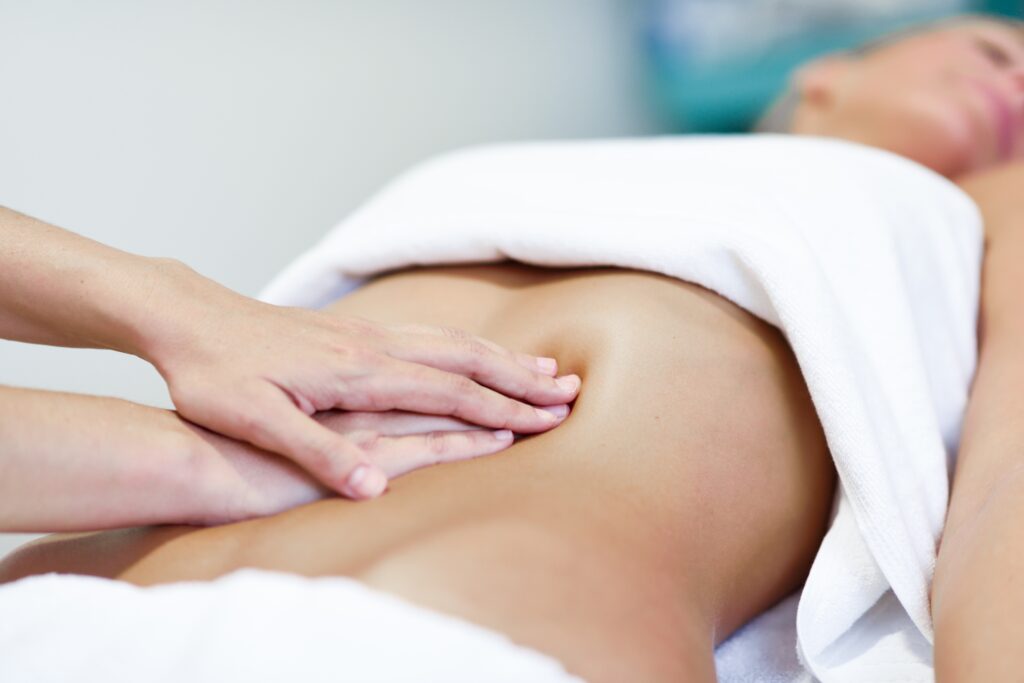Lymphatic drainage massage is a gentle and rhythmic modality widely recognized for reducing swelling and inflammation in the body. It offers soothing relief to many individuals seeking therapeutic benefits. However, it’s important to note that the effects of manual lymphatic drainage (MLD) can be powerful, and there are situations where it should be avoided entirely or approached with caution due to contraindications.
-
Absolute Contraindications

Certain medical conditions make it imperative to avoid lymphatic drainage massage entirely. These conditions include:
a) Deep Vein Thrombosis (Blood Clot):
If a client presents with acute pain and swelling, it is crucial to suggest that they seek medical attention instead of receiving MLD. Lymphatic drainage massage can potentially dislodge clots, causing them to travel throughout the body, leading to severe complications.
b) History of Congestive Heart Failure:
When the heart does not function properly, manual lymphatic drainage may move more fluid than the heart can effectively process. The MLD process can result in fluid overload and exacerbate the symptoms associated with congestive heart failure. It is advisable to consult with a healthcare professional before considering MLD.
c) Malignancy:
If a client presents with an active cancer malignancy and has not yet started treatment, lymphatic drainage massage should be avoided. The client must be in definitive cancer treatment and cleared by their treating oncologist before receiving MLD. Cancer treatments often have guidelines regarding massage therapies, and adherence to these guidelines is essential to ensure the client’s well-being.
d) Cellulitis:
Cellulitis is a bacterial skin infection typically manifests as redness, swelling, and heat in the affected area. If a client presents with these symptoms, such as fever and pain, it is important to advise them to seek immediate medical attention from a primary care advisor or emergency room. In cases of cellulitis, lymphatic drainage massage should not be performed as it has the potential to spread the infection and worsen the condition.
e) Chronic Renal Insufficiency:
Clients with renal failure or transplants may not tolerate excess fluid from lymphatic drainage massage. Hemodialysis patients may consider manual lymphatic drainage after clearance from their nephrologist. A Certified Lymphedema Therapist (CLT) must perform the massage, including manual lymphatic drainage and wrapping.
-
Relative Contraindications

In some instances, lymphatic drainage massage may still be feasible, but caution should be exercised due to specific circumstances. These relative contraindications include:
a) Lymph Nodes Removed or Damaged:
Clients who have undergone lymph node removal or radiation therapy may experience impaired lymphatic flow, increasing their susceptibility to developing lymphedema. In these cases, the lymphatic drainage therapist should possess expertise in redirecting fluid to affected lymph drains while rerouting some liquid to adjacent troughs. This drainage process helps prevent overwhelming the lymphatic system on the affected side.
b) Pain Medication:
After undergoing surgical procedures, many individuals are prescribed pain medication to manage discomfort. Massage therapists must know their clients’ pain medication usage before administering lymphatic drainage massage. Pain thresholds can be difficult to determine accurately when clients are on medication, and adjustments may need to be made to ensure safe and effective treatment.
c) Menstruation:
During menstruation, the lymphatic flow in the body naturally increases. While this is a normal physiological response, it’s essential to consider.
As with any therapy, seeking guidance from qualified and certified lymphatic massage therapists is essential. Theresa Gamlin is a certified lymphatic massage therapist who will customize the treatment according to your needs. If you have any questions surrounding this treatment, please contact Theresa Gamlin at the Bodhi Tree in the Still Space Center for Holistic Care in Mission Valley, the heart of San Diego.











